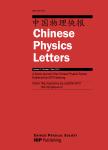Magnetic Order and Its Interplay with Structure Phase Transition in van der Waals Ferromagnet VI_(3)
Magnetic Order and Its Interplay with Structure Phase Transition in van der Waals Ferromagnet VI3作者机构:State Key Laboratory of Surface Physicsand Department of PhysicsFudan UniversityShanghai 200433China Shanghai Qi Zhi InstituteShanghai 200232China Neutron Scattering DivisionOak Ridge National LaboratoryOak RidgeTennessee 37831USA Laboratory for Computational Physical Sciences(MOE)Fudan UniversityShanghai 200433China Institute of Nanoelectronics and Quantum ComputingFudan UniversityShanghai 200433China Shanghai Research Center for Quantum SciencesShanghai 201315China
出 版 物:《Chinese Physics Letters》 (中国物理快报(英文版))
年 卷 期:2021年第38卷第9期
页 面:69-73页
核心收录:
学科分类:07[理学] 070205[理学-凝聚态物理] 0702[理学-物理学]
基 金:Supported by the Innovation Program of Shanghai Municipal Education Commission(Grant No.2017-01-07-00-07-E00018) the Shanghai Municipal Science and Technology Major Project(Grant No.2019SHZDZX01) the National Natural Science Foundation of China(Grant No.11874119) the support of U.S.DOE BES Early Career Award No.KC0402020 under Contract No.DE-AC05-00OR22725
主 题:Transition refined render
摘 要:Van der Waals magnet VI_(3) demonstrates intriguing magnetic properties that render it great for use in various ***,its microscopic magnetic structure has not been determined ***,we report neutron diffraction and susceptibility measurements in VI_(3) that revealed a ferromagnetic order with the moment direction tilted from the c-axis by ~36° at 4 K.A spin reorientation accompanied by a structure distortion within the honeycomb plane is observed,before the magnetic order completely disappears at TC=50 *** refined magnetic moment of ~1.3μB at 4 K is much lower than the fully ordered spin moment of 2μB/V^(3+),suggesting the presence of a considerable orbital moment antiparallel to the spin moment and strong spin-orbit coupling in VI_(3).This results in strong magnetoelastic interactions that make the magnetic properties of VI_(3) easily tunable via strain and pressure.



